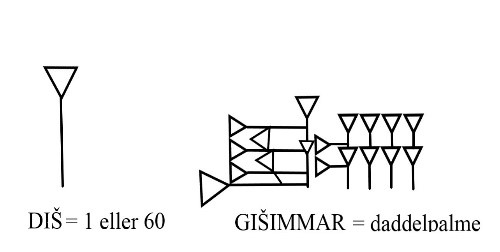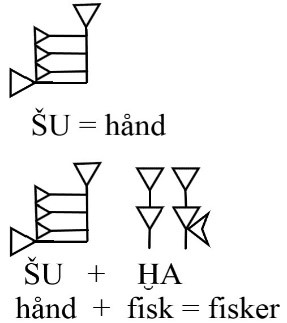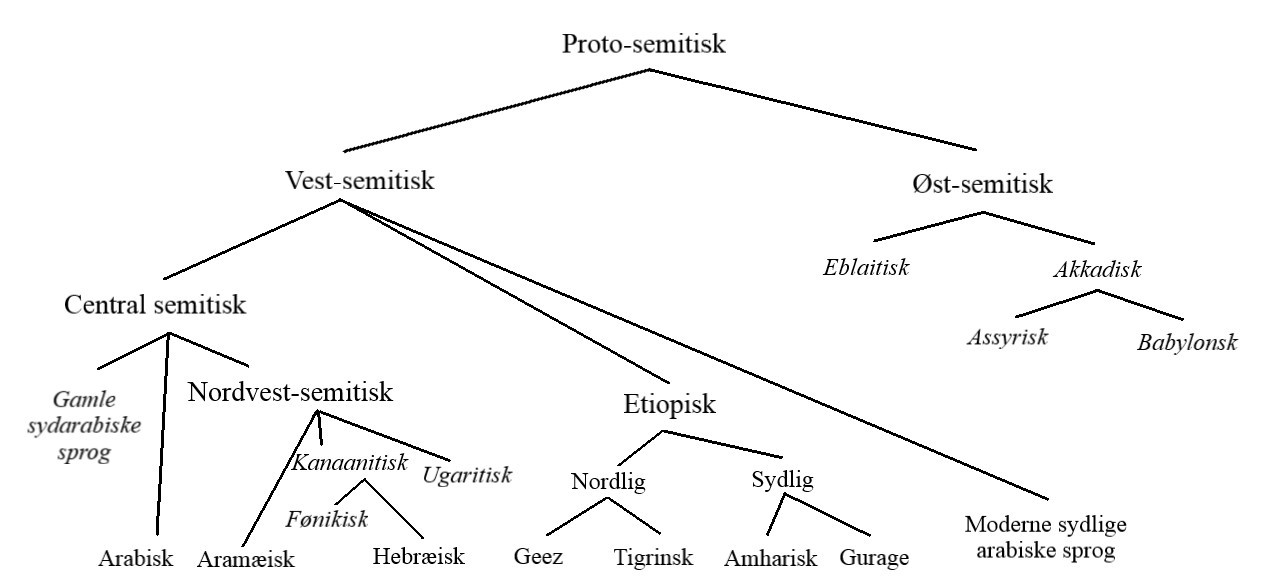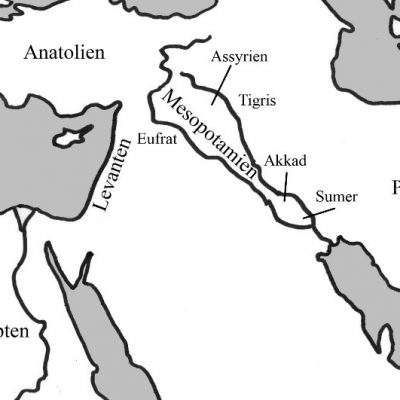Ancient Mesopotamia is often referred to as “the cradle of civilization”, a label that actually carries a certain level of truth to it. Here, along the banks of the rivers Euphrates and Tigris, mankind founded the world’s first major cities 6000 years ago and invented the world’s first writing system: cuneiform. These two innovations – the urban revolution and the invention of writing – have proved to be crucial to the way we humans have settled on Earth.

It is called cuneiform because cuneus in Latin means “wedge”, and each symbol is formed from small triangles (wedges), which are assembled in different ways and at different angles (the composition of wedges for a single symbol can vary from just one wedge to almost twenty; see the example on the right).
The preferred medium for cuneiform was clay, a plentiful material found naturally as deposits of alluvial sediments along the rivers of Mesopotamia. The clay was shaped into small square tablets that were often not bigger than the palm of a hand, onto which the wedges were imprinted with a stylus, an elongated piece of reed. The top of the stylus was carved into the shape of a triangle.

A people called the Sumerians who lived in the southernmost part of Mesopotamia invented cuneiform. They spoke and wrote their own language, Sumerian. Sumerian is a linguistic isolate; that is, a language that is not related to any other known languages. It is assumed that Sumerian went extinct as a spoken language around 2000 BC, after which it only appeared in writing in erudite and esoteric contexts. These circumstances – that Sumerian is a unique and extinct language – are two significant reasons why the grammar and intonation are not yet fully understood, and those who research Sumerian (also called Sumeriologists) still debate about the fundamental characteristics of the structure of the Sumerian language.
Today most researchers agree that Sumerian is an agglutinative language; that is, it predominantly consists of indeclinable lexemes (just like Turkish), the meanings of which can be modified by “gluing” different morphemes to the lexeme – either in the beginning (prefixes) or at the end (suffixes) of the word. Sumerian lexemes (i.e. the words in their basic form without affixes) are often very short, frequently one or two syllables, whereas a Sumerian “chain” of words (i.e. one or two lexemes and other morphemes) can be pretty long. An example could be DUMU LUGAL KALAMakakenera ‘to the sons of the king of the country’. A morphological analysis of this short phrase could look something like this:
| DUMU | LUGAL | KALAM | ak | ak | ene | ra |
| son | king | country | genitive | genitive | plural | dative |
The words written in upper case are lexemes, and the ones in cursive are morphemes. The majority of lexemes in Sumerian are expressed as logograms in writing; that is, a single symbol represents an entire word. Several logograms can also be put together to create new words (see example on the right).

The short monosyllabic words in Sumerian made it possible for the Sumerians’ northern neighbors, the Akkadians, to acquire cuneiform and use it to express the Akkadian language. Akkadian is a Semitic language related to Arabic, Aramaic and Hebrew, and it is often divided into two main dialects: Babylonian and Assyrian.
Although all languages of the East Semitic branch of the linguistic family tree that Akkadian belongs to are extinct today, we almost have a complete understanding of the language. In contrast to Sumerian, Akkadian is an inflectional language with 4 cases: nominative, accusative, genitive and dative (just like German). But because the symbols of cuneiform were semantically tied to the lexemes of the Sumerian language, the Akkadians had to rethink the way they used the writing system. What they did was convert cuneiform to a syllabic writing system rather than a logographic one. In this way, the symbol ŠU, which means ‘hand’ in Sumerian, was used to denote the syllable šu, which was used, for example, as a syllable in the word ik-šu-dam ‘he/she arrived’. If IK ŠU DAM were to be read as Sumerian logograms, the symbols would mean ‘door’, ‘hand’ and ‘wife’, respectively.
By converting logograms into syllables, the Akkadians made it possible to use cuneiform for their own language. They did, however, also use Sumerian logograms frequently, since these were easier to use than spelling the whole word; for example, they often used the symbol ŠU as a logogram for ‘hand’, but instead of reading the symbol as ŠU, they read it as qātum, the Akkadian word for hand.

The oldest Akkadian cuneiform texts date back to around 2400 BC, and the newest texts are from around 100 AD. It is still unclear when Akkadian died out as a spoken language, but around the 8th century BC it started to gradually lose terrain to Aramaic. The language experienced its largest expansion towards the end of the Bronze Age (around 1400 BC), where it acted as a lingua franca (contact language) in many areas of the Middle East. Today we have found texts written in cuneiform all the way from Egypt in the south to central Turkey in the north, and from Lebanon and Syria by the east coast of the Mediterranean Sea in the west to Iran in the east. It might have been the Sumerians who were the source of the writing system, but the Akkadians made it famous and spread it from Mesopotamia to the rest of the Middle East.
We have found cuneiform texts written in Akkadian in all sorts of genres, ranging from receipts to administrative documents to major mythological works and great literary epics. The most famous work of Mesopotamia is the legend of King Gilgamesh.
The story of Gilgamesh goes all the way back to the Sumerians who were the first to write down several legends about this mythical king’s deeds. Later on, the legend found its way into Akkadian literature and towards the end of the 11th century BC all the legends and stories about Gilgamesh were combined in one major work carved into eleven big clay tablets, which make up the literary work that we read today.
This combined version of Gilgamesh is also noteworthy because it includes a complete version of the Story of the Flood, the story about the great flood mandated by the gods to destroy humanity. This myth later found its way into the Bible as the story of Noah’s Ark, and when a man named George Smith translated this section of Gilgamesh in 1872 for the first time, it naturally caused a worldwide sensation.
However, today there are other good reasons why the story of Gilgamesh benefits from great popularity, and most people do not read the story to gain insight into pre-biblical myths as they did in Victorian times. What appeals to contemporary readers is most likely that King Gilgamesh, in his failed search for eternal life, ends up confronting the universal existential question about the meaning of life.
š is pronounced like the first sound in show.
ḫ is pronounced like the last sound in the Scottish word loch
The accent symbol ‾ marks a long vowel like in the name of the Japanese city Kyōto.
This post was translated from Danish by Hannah Fedder Williams.
Rasmus Aarslev is a ph.d. student of Assyriology at the University of Copenhagen and previous external lecturer of Assyriology at the University of Copehagen, where he has taught both Sumerian and Akkadian.







